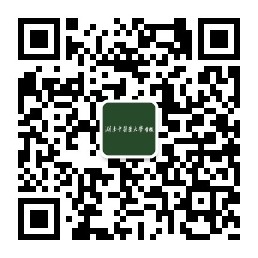| 引用本文: |
罗开民, 王东利, 戚天臣, 寇军威, 郝磊.芒针针刺次髎穴联合常规针刺治疗不完全性脊髓损伤后尿潴留的疗效观察[J].湖南中医药大学学报,2025,45(4):668-673[点击复制] |
|
| |
|
|
| 本文已被:浏览 724次 下载 926次 |
| 芒针针刺次髎穴联合常规针刺治疗不完全性脊髓损伤后尿潴留的疗效观察 |
| 罗开民,王东利,戚天臣,寇军威,郝磊 |
| (唐山市第二医院, 河北 唐山 063000) |
| 摘要: |
| 目的 通过观察芒针针刺次髎穴联合常规针刺治疗不完全性脊髓损伤后尿潴留的疗效,探究芒针针刺次髎穴在治疗中的可行性。方法 将60例诊断为不完全性脊髓损伤后尿潴留患者随机分为对照组(n=30)与治疗组(n=30)。对照组患者实施间歇导尿、膀胱功能训练及常规针灸治疗,治疗组则在对照组治疗方案的基础上实施联用芒针针刺次髎穴治疗,疗程均为4周。比较两组患者治疗第28天临床总有效率,治疗前后中医主要症状评分、尿动力学参数[最大尿流率(Q-max)、最大尿流率时逼尿肌压力(Pdet-Q-max)、膀胱最大储尿量(VMCC)、残余尿量(PVR)]、尿潴留程度分级,以及治疗期间不良反应发生情况。结果 治疗第28 天,治疗组临床总有效率高于对照组(P<0.05)。治疗第28天,与治疗前相比,两组患者的Q-max、Pdet-Q-max、VMCC水平升高(P<0.05),PVR水平降低(P<0.05),中医主要症状评分降低(P<0.05);且与对照组相比,治疗组患者Q-max、Pdet-Q-max、VMCC水平升高(P<0.05),PVR水平降低(P<0.05),中医主要症状评分降低(P<0.05)。治疗第28天,治疗组患者尿潴留程度分级优于对照组(P<0.05)。两组患者治疗期间均未出现不良反应。结论 相比常规针刺疗法,联合芒针针刺次髎穴治疗不完全性脊髓损伤后尿潴留患者,可提高临床总有效率、改善患者尿动力学参数、降低中医主要症状评分、缓解尿潴留程度分级,且安全性较高。 |
| 关键词: 不完全性脊髓损伤 尿潴留 芒针针刺 次髎穴 尿动力学参数 尿潴留程度分级 中医主要症状评分 |
| DOI:10.3969/j.issn.1674-070X.2025.04.012 |
| 投稿时间:2024-07-01 |
| 基金项目:河北省中医药管理局科研计划项目(2020430)。 |
|
| Efficacy observation of the treatment of urinary retention after incomplete spinal cord injury by elongated needling at the Ciliao point combined with conventional acupuncture |
| LUO Kaimin, WANG Dongli, QI Tianchen, KOU Junwei, HAO Lei |
| (The Second Hospital of Tangshan, Tangshan, Hebei 063000, China) |
| Abstract: |
| Objective To observe the clinical effects of elongated needle at Ciliao point (BL 32) combined with conventional acupuncture in treating urinary retention after incomplete spinal cord injury, and to explore the feasibility of elongated needle at Ciliao point (BL 32) in treatment. Methods A total of 60 patients with urinary retention after incomplete spinal cord injury were randomly divided into control group (n=30) and treatment group (n=30). The patients in the control group were treated with intermittent catheterization, bladder function training, and conventional acupuncture, while the patients in the treatment group were treated with combined elongated needle at Ciliao point (BL 32) on the basis of the treatment scheme of the control group. The course of treatment was four weeks. The clinical total effective rate, TCM main symptom scores, urodynamic parameters [maximum urinary flow (Q-max), detrusor pressure at maximum urinary rate (Pdet-Q-max), maximum cystometric capacity volume (VMCC), post-void residual urine volume (PVR)], urinary retention degree classification, and adverse reaction rate during treatment were compared between the two groups on the 28th day of treatment. Results On the 28th day of treatment, the total clinical effective rate of the treatment group was higher than that of the control group (P<0.05). Besides, compared with those before treatment, the Q-max, Pdet-Q-max, and VMCC levels of both groups increased (P<0.05), PVR levels decreased (P<0.05), and TCM main symptom scores decreased (P<0.05); compared with the control group, the treatment group showed an increase in Q-max, Pdet-Q-max, and VMCC levels (P<0.05), a decrease in PVR levels (P<0.05), and a decrease in TCM main symptom scores (P<0.05). On the 28th day of treatment, the degree of urinary retention in the treatment group was better than that in the control group (P<0.05). Both groups did not experience any adverse reactions during the treatment period. Conclusion Compared with the conventional acupuncture, the combination of acupuncture at Ciliao point (BL 32) with elongated needle in treating urinary retention after incomplete spinal cord injury can improve the clinical total effective rate, improve the patients' urodynamic parameters, reduce the TCM main symptom scores, alleviate the degree of urinary retention, and exhibit a higher safety. |
| Key words: incomplete spinal cord injury urinary retention elongated needle acupuncture Ciliao point (BL 32) urodynamic parameter degree of urinary retention TCM main symptom scores |
|

二维码(扫一下试试看!) |
|
|
|
|




